Elizabeth Willing, Dessert II, performed on 3 October 2013, Brenda May Gallery, Sydney, as part of the curated exhibition Sugar, Sugar, 1 to 19 October 2013.
As part of Sugar, Sugar, Elizabeth Willing held an experimental meal that explored issues of excess through an extravagant consumption of sugar. On Thursday 3 October, Willing presented the second iteration of her Dessert series for 12 participants at Brenda May Gallery. The menu consisted of five courses of sweet dishes and drinks to align with the focus of the exhibition.
For a review of Dessert II, see Sarah Vandepeer, “Sugar Sugar,” Art Almanac, October 2013: 46-47.
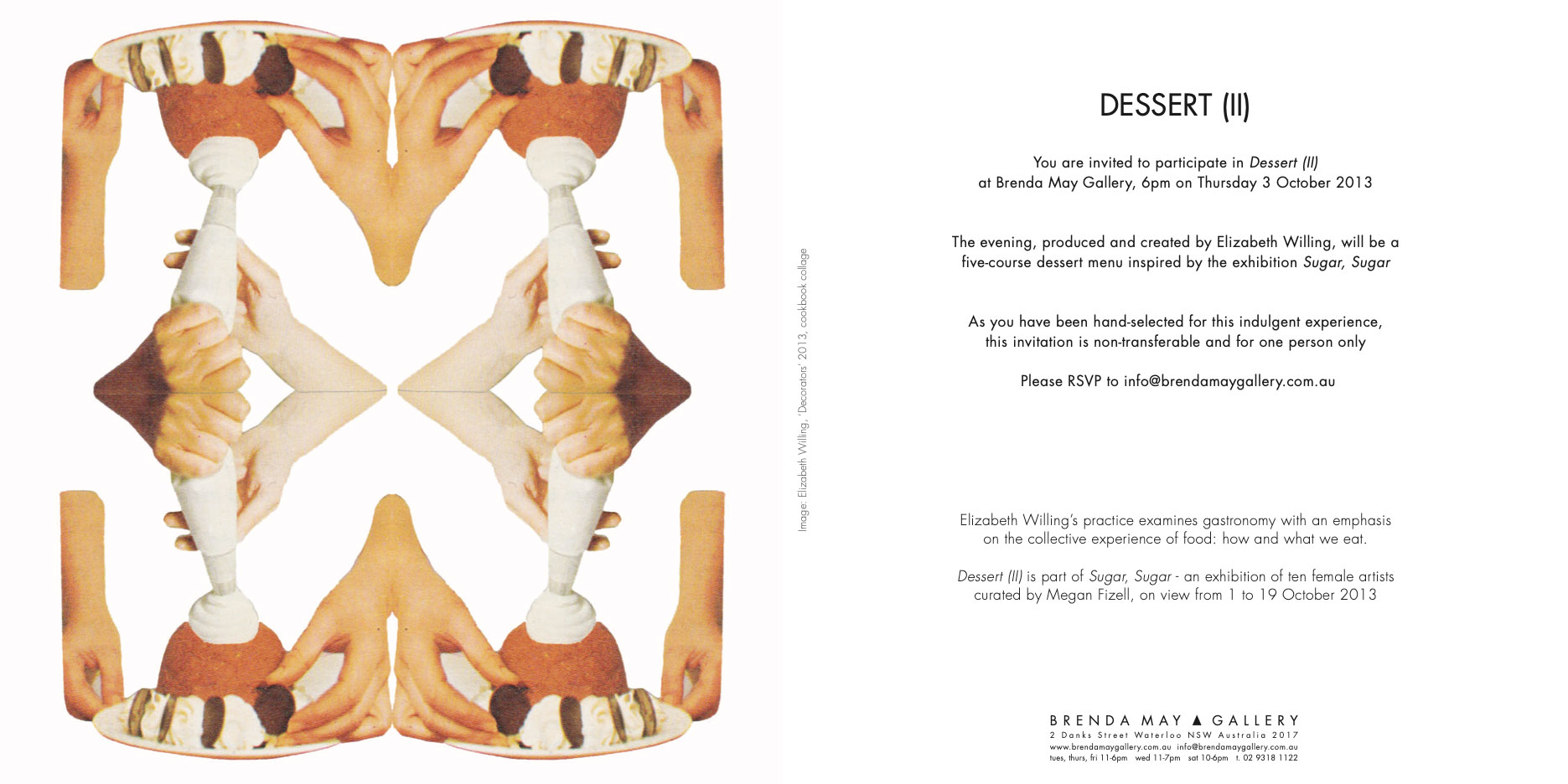
A significant part of my practice is working within the context of the meal, participatory dining events. Dessert allows me to bring together audience and artwork at the dining table to further explore the potential of individual experiences in art. Through these dessert degustations I continue my explorations of food as art material, the potential for multi sensory engagement, and our complex relationships to eating. Dessert is also a space for me to present new sculpture and design elements created to reconsider the choreography of eating.
– Elizabeth Willing, October 2013 (artist website)

COURSE 1: Branding iron rosette cookies.
Willing began Dessert II by frying Swedish rosette cookies with a custom branding iron. The iron was shaped into a heart with a large ‘W’ in the centre. After frying, the cookies were dusted with sugar and served hot.
The branding iron has been designed around my name [Willing] as it would be on a cattle station, showing a W surrounded by a heart, the heart is a common shape for biscuits as well as being a reference to cooking as a labour of love. I love the indulgence of a deep fried biscuit rolled in sugar, a food oblivious of diet culture.
– Elizabeth Willing, 2013
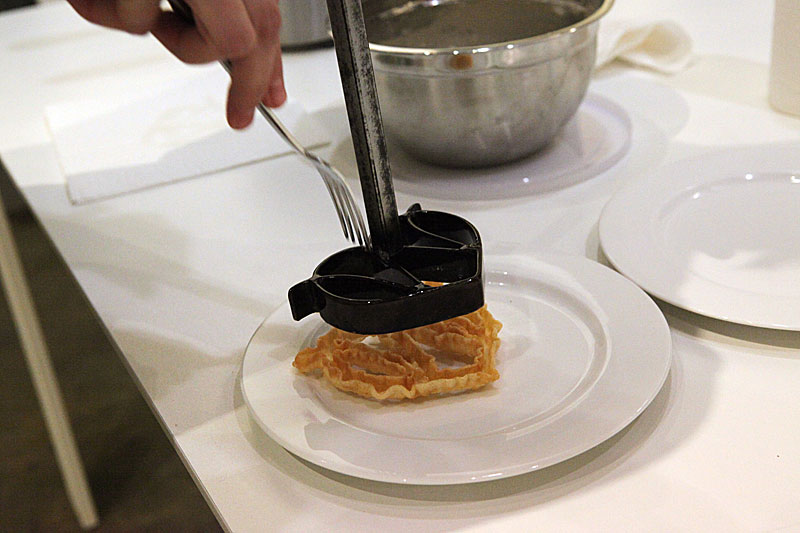
COURSE 2: Tipping plate served with banana and liquorice allsorts.
For the the second course, Willing presented guests with a selection of handmade liquorice and banana allsorts (a type of slightly chewy confectionary from the UK) on tipping plates. The round plate is perched atop an inverted cone so that the centre of the plate balances on the tip. When loaded with the allsorts, the heaviest side of the tipping plates is weighted so that the edge of the plate rests on the table. From this point, as guests begin to consume the confections, the plate rolls back and forth and will always settle on its heaviest side. The section of the plate will point toward whichever guest has had the least amount of food (hence it being the heaviest side as there is more left on the platter). In a sense, the plate is ‘offering’ more to the guest who has had the least while also identifying the guest who has had the most.
The tipping plates attempt to formalise the anxieties and etiquette around sharing food. The tipping plate rolls and settles on the edge that carries the most food to encourage diners from that side of the table to eat more, and will then adjust itself as the diners sample from different sides.
– Elizabeth Willing, quoted in Appetite (2013)
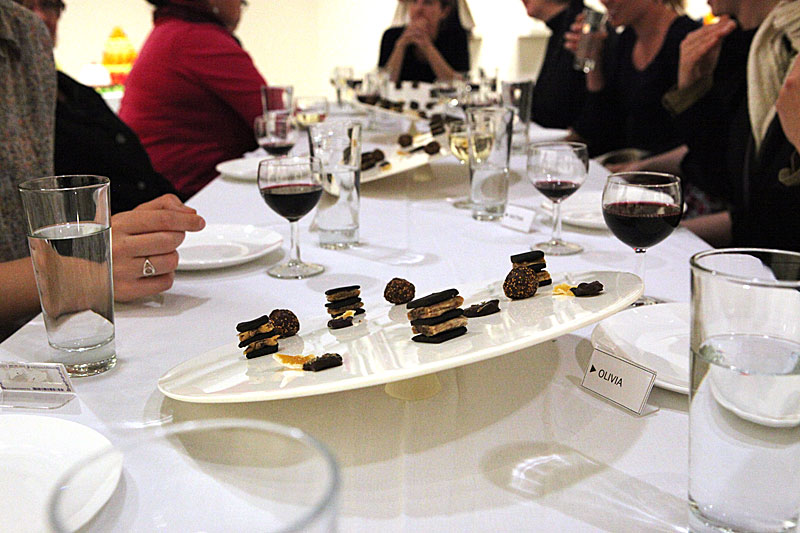
COURSE 3: Warm cognac cocktail out of a mouth cup.
The third course of Dessert II was a warm cognac cocktail supped from a mouth cup. The mouth cup is another vessel developed by Willing specifically for her dining events. Made of white glazed ceramic, the mouth cup is a round sphere the size of a small melon. Willing pours the liquid cocktail into the cup through a mouth-shaped opening. A pair of perfectly formed lips frames the opening giving it the appearance of a mouth slightly ajar. The shape of the cup posed certain problems for the guests. First, they could not set down the cup because it would roll away and the drink would seep out of the mouth. Second, to drink from the cup, the guest had to place their own mouth over the ceramic lips, effectively giving it a ‘kiss’ while pouring the drink from its ‘body’ to theirs.
The mouth cups were designed to blur the lines between sipping and spitting, taking in through the mouth and rejecting through it. When we drank through them though I realised it was more like a kiss. I provided nowhere on the table to rest the cups so that diners were forced to nurse them, keeping them warm.
– Elizabeth Willing, 2013
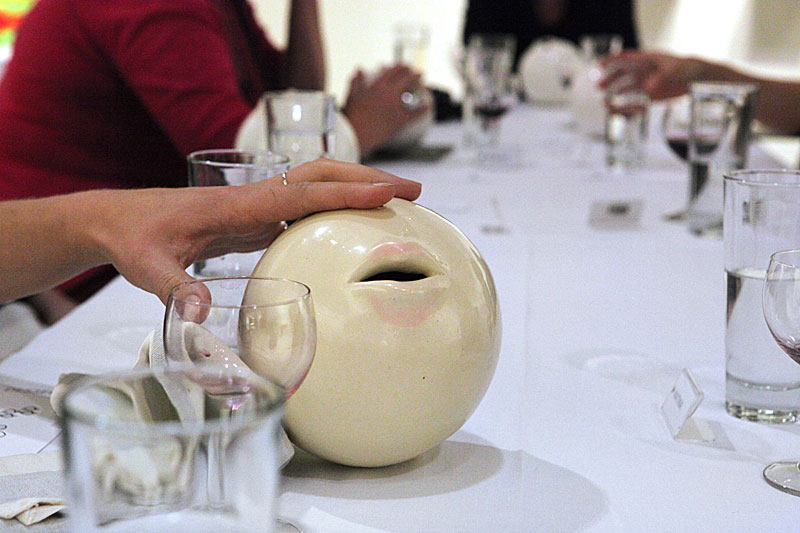
COURSE 4: Wedding fruit cake served with icing, marzipan and an almond necklace worn by participants.
Willing’s fourth course was a deconstructed wedding cake comprised of two parts: she served the dense fruit cake on a small plate and meticulously fashioned the marzipan icing into delicate flowers that she strung together with almonds into a necklace. Willing draped the necklace around the neck of each guest and the heat from their bodies warmed the marzipan and released the scent of almonds.
The wedding cake is the most iconic dessert in my eyes, it is celebratory, it is shared and it is elaborate. I want to rethink the traditional combination of fruitcake, marzipan and white icing. For ‘Dessert (II)’, I have taken inspiration from Sugar, Sugar artist Claire Mcardle’s ‘Gilty’, by deconstructing the cake into two pieces, a delicious fruitcake and an edible necklace. The warmth of the diners body will release the smells of the marzipan and icing roses while providing tasty snacks throughout the course.
– Elizabeth Willing, quoted in Appetite (2013)
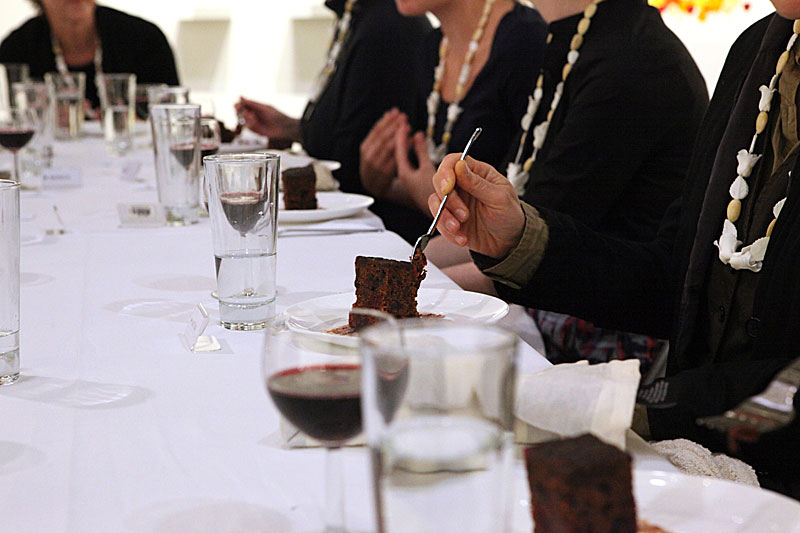
COURSE 5: Indian burfi fudge served on a cardamom dusted plate with chai tea.
On a trip to India a few years ago I sought out sweet shops in every city to eat this milk fudge, Burfi. I have combined the memories of this creamy fudge with the iconic architecture of the Taj Mahal. The plate is to be shared by two people who must choose between the black or white version topped upon pistachio Ghat and both surrounded by a tiling pattern made of ground cardamon. This course is served with freshly brewed chai tea.
– Elizabeth Willing, quoted in Appetite (2013)
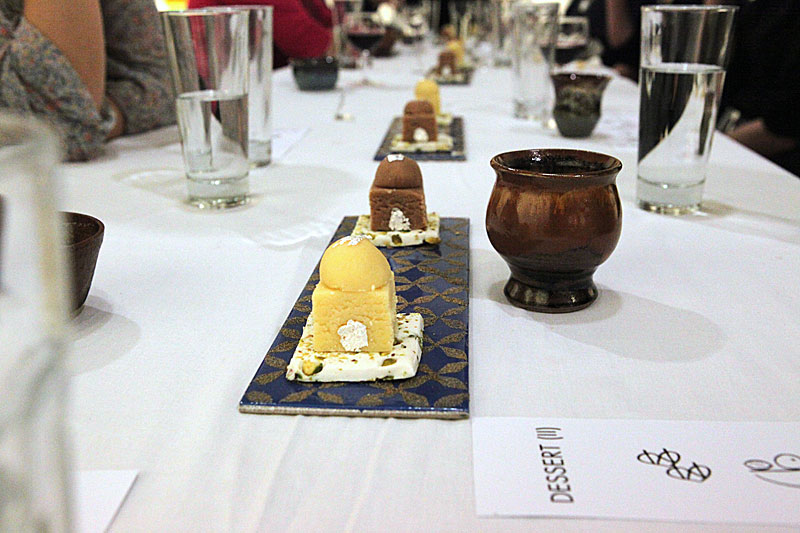
For recipes from Willing’s Dessert II, see Megan Fizell, “Sugary Masterpieces,” Appetite, November 2013: 44-47.


1 comment
Brenda May Gallery/MAY SPACE | Megan R. Fizell | Art Historian & Theorist says:
Oct 17, 2022
[…] Elizabeth Willing: Dessert II (dining performance) for the exhibition Sugar, Sugar, Brenda May Gallery; 3 October 2013. […]